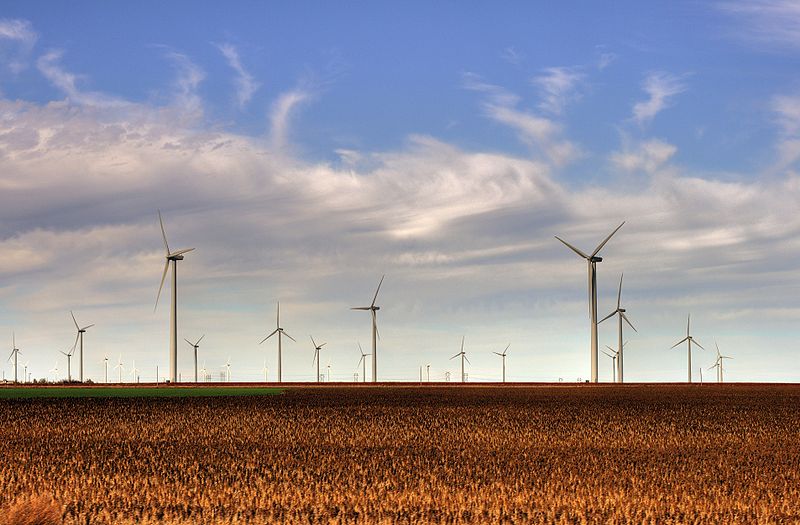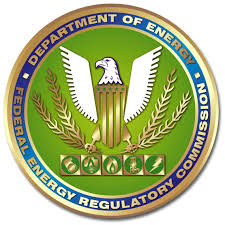The United States made substantial progress towards a low-carbon economy over the past several years. Low-carbon technologies became more efficient and affordable compared to fossil fuels, while U.S. clean energy investment and deployment grew to new heights, creating millions of jobs.
All this progress could be in jeopardy due to the economic impacts of COVID-19 and government support for the declining fossil fuel industry. But there is a better way—one that spurs economic growth, creates jobs, reduces costs for Americans and fights climate change.
Our new paper synthesizes the latest research on the benefits of U.S. climate action in today’s economic reality. We found that strong climate action and investments in low-carbon infrastructure can be effective ways to build back better from COVID-19 and secure the economy’s long-term success.
Here are 10 charts drawn from America’s New Climate Economy, which illustrate the economic benefits of advancing climate policies in the United States:
1) The economic damages from climate change will increase the longer we delay action.
Like the coronavirus pandemic, climate change is a threat multiplier. The earlier the United States responds, the easier it will be to limit the effects of climate change. Climate change is already increasing the frequency and intensity of extreme weather events like hurricanes.

Without new policies, the United States will face economic damages from climate change equivalent to 1-3% of GDP per year by 2100. In a worst-case scenario, the damages could reach 3.7-10%.
There will be more heat-related deaths, crop yields will decline in many parts of the country, extreme weather will become more frequent and intense, and sea level rise will damage houses, roads and other infrastructure. There are other huge costs of reliance on fossil fuels, too. Air pollution caused 107,00 premature deaths in the United States in 2017 alone. Early research indicates that people living in polluted areas are more susceptible to COVID-19.
2) Renewable energy and storage are becoming cost-competitive with fossil fuel generation, even without subsidies.
About three-quarters of the U.S. coal fleet is now more expensive to operate than it would be to build and operate new solar and wind energy farms. Recent research also suggests that new natural gas plants could be a risky investment, given continuing improvements in the cost and performance of clean energy technologies. This has changed the calculus of many utilities, which are increasingly making commitments to cut fossil fuel generation and transition to zero-carbon electricity.

Costs are falling in other sectors as well. For example, electric cars and SUVs are already cheaper to operate than gasoline or diesel vehicles — even with low gas prices due to the coronavirus — and they are expected to reach purchase price parity during the mid-2020s. Battery storage, which is crucial to the deployment of electric vehicles and addressing the variability of wind and solar energy, has seen a dramatic drop in prices, from $1,100 per kilowatt-hour (kWh) in 2010 to $156/kWh in 2019.
3) U.S. clean energy investment climbed to a record high in 2019 and, despite COVID-19, long-term drivers remain strong.
Led by investments in wind and solar, U.S. clean energy investment rose 20% from 2018 to 2019, reaching $78.3 billion. The United States is second only to China in total clean energy investments.

The financial sector is also waking up to the risks and costs of climate change. BlackRock, the world’s largest investment firm, announced that climate change will be central to its investment strategy, and it will require additional climate-related reporting from the companies in which it invests. This could be a watershed moment for corporate action on climate.
The coronavirus is curbing U.S. clean energy investments, with investment in new renewables capacity declining by 30% in the first half of 2020, compared to the same period in 2019. However, the fundamentals of clean energy investment remain largely unchanged over the long-term, and given historic low interest rates provide significant opportunity for both the public and private sectors to spur a low-carbon post-COVID recovery.
4) Zero-emissions power generation is responsible for more than twice as many jobs as fossil fuel generation.
In the power sector, zero-emissions generation like solar and wind was responsible for about 544,000 jobs in 2019, more than twice as many as the 214,000 jobs in fossil fuel generation. Add that to jobs in energy efficiency, low-carbon vehicles and clean fuels, and there were 3.6 million Americans who had clean energy jobs in 2019 – more than all workers in grocery and liquor stores combined.

Although it is too soon to tell what the impacts of the coronavirus will be, one study estimated that 600,000 clean energy workers lost their jobs in March and April 2020. If clean energy receives appropriate government support, it could overcome the short-term shock and be in a better position in the future.
5) $1 million spent on clean energy in the United States generates more than twice as many jobs as $1 million spent on fossil fuels in the short- to medium-term.
Whereas fossil fuels are more capital-intensive, clean energy is generally more labor-intensive, so investing in clean energy can create more new jobs. This will be especially true during the initial build-out of clean energy capacity, which will support manufacturing and construction jobs.

Other low-carbon sectors are job creators, too. For example, as part of U.S. stimulus spending in 2009, each dollar spent on public transit projects created 70% more job-hours than a dollar spent on highways. Investing $4 billion per year in reforestation and sustainable forest management could support 150,000 jobs per year – three times as many jobs as logging currently supports.
The most important thing will be to ensure that clean energy jobs are quality jobs. The mean hourly wages for clean energy jobs are higher than the national average by 8–19% and many are available to workers without college degrees. However, there are important concerns about job quality, security, and pay compared to fossil fuel jobs, including a lack of benefits such as health care and contract security in some projects.
6) The investments needed for low-carbon infrastructure are substantial, but manageable.
Decarbonization will require new investment in infrastructure such as clean power plants, green buildings, and electric vehicles, among others. A range of studies estimate that ambitious climate action will require additional energy investments equivalent to 2% of GDP at the most. One of the newest studies estimated that the United States would experience net savings rather than net expenditures, with the additional clean energy investment needs outweighed by fossil fuel spending reductions.

Even if the additional investment for a low-carbon economy reached 2% of GDP, that is well within the historical range. Energy spending in the United States is at a low point now at around 6% of GDP, but has fluctuated to as high as 13%. The U.S. Federal Reserve lowered interest rates to zero to respond to the economic impacts of the coronavirus pandemic, so now is a particularly good moment to invest in low-carbon infrastructure for the long-term.
7) The United States can secure a share in the booming domestic and global cleantech market.
Demand for low-carbon technologies is increasing, both within the United States and globally. The United States has an opportunity to boost manufacturing and open pathways to increased competitiveness.

The U.S. advanced energy industry generated $238 billion in revenue in 2018, about 15% of the global total. That’s roughly equal to that of aerospace manufacturing and double that of the biotechnology industry. Furthermore, a $23 trillion market for climate-smart investments is expected to be created by 2030 in 21 emerging markets as those countries work to meet the goals of the Paris Agreement.
Given the broadly shared concern about U.S. economic recovery after the coronavirus, this is an ideal moment to revitalize America’s manufacturing sector by scaling up the production and export of low-carbon technologies.
8) Energy efficiency can reduce energy costs for rural households.
Low-income, rural households face the highest energy burden in the country, spending 9% of household income on energy bills compared to the national average of 3.3%. This can force many rural households to make difficult tradeoffs between paying energy bills and meeting other basic needs such as food or medicine. It also increases the likelihood that these households could see their utility services shut off at some point, a situation that COVID-19 is exacerbating.

Energy efficiency upgrades such as adding insulation and sealing air leaks can reduce rural energy burdens by as much as 25%, translating into more than $475 in annual savings for rural households.
9) Wind energy provides new streams of income for farming and ranching communities.
Wind farms paid $761 million in state and local taxes in 2018, plus $289 million in lease payments to farmers and landowners who hosted wind turbines on their land. In Adair County, Iowa, 10 new wind farms built over the last decade added 30% to the county’s tax base. In Jackson County, Minnesota, wind farms generate nearly 20% of the county’s annual operating revenues.

These revenues are providing funding for local infrastructure projects like improving roads and bridges. Hosting wind turbines on their farms also provides farmers with a stable income, which takes on increasing importance during times with declining agricultural income and razor-thin margins.
10) 41 U.S. States and the District of Columbia are growing their economies while reducing emissions.
A growing wave of U.S. state and city policymakers are realizing that climate action is the only sustainable way forward, and the economics back up this conviction.
The majority of U.S. states reduced their energy-related CO2 emissions while increasing real GDP between 2005 and 2017. This includes states in all parts of the country, including Maryland and Maine in the Northeast, Alabama and Georgia in the South, Indiana and Ohio in the Midwest, and Alaska and Nevada in the West. For more on how this has been possible, which states are leading, and which states are lagging, check out this post.

Ensuring a Low-carbon Economy in the United States
The low-carbon transition will provide benefits to the U.S. economy. That doesn’t mean that it will be easy, though. Renewed federal government support will be essential. Transition policies must also be fair to ensure that communities tied to carbon-intensive industries are not left behind, and that all Americans are able to share the economic benefits.
The United States stands at a historic crossroads. For people, the planet and the economy, the transition to a new climate economy might be the best bargain of our time.
For more, read: America’s New Climate Economy: A Comprehensive Guide to the Economic Benefits of Climate Action in the United States



